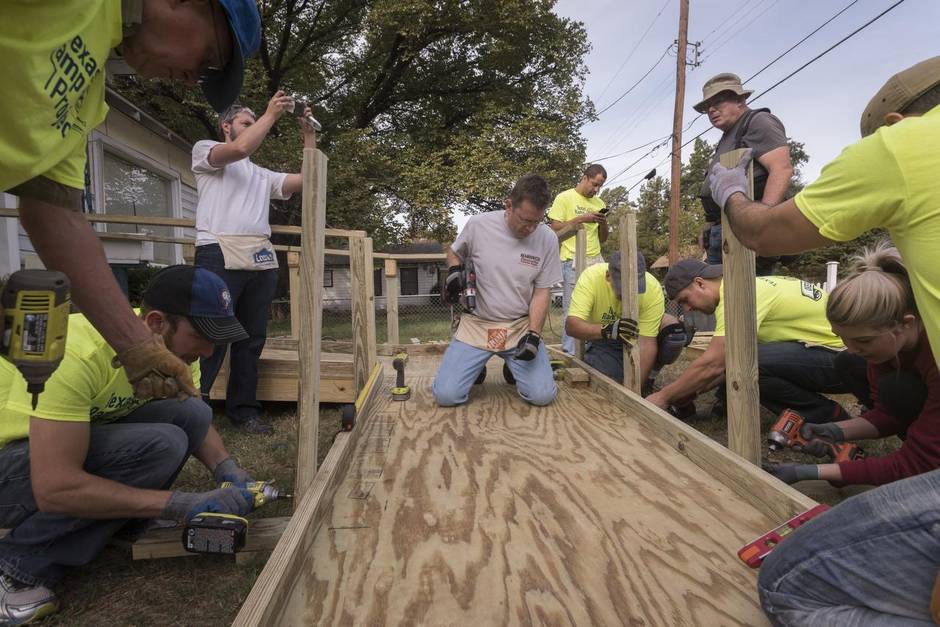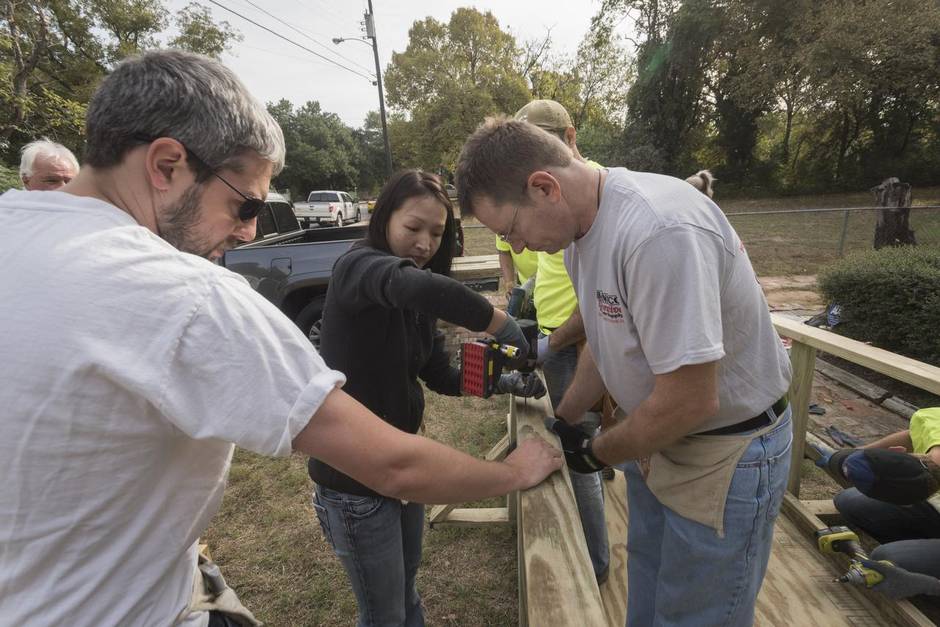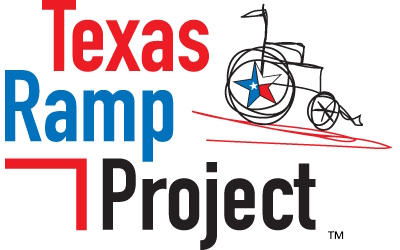Dallas Morning News: Neighborsgo
by DANIEL HOUSTON
Published: Updated: Photos: Rex C. Curry/Special Contributor
It’s a simple structure, but Shirley Bevers describes the ramp in her garage as a “lifesaver.”
The Lake Highlands resident experiences tremors from time to time that cause her to lose balance and occasionally fall. No area is completely safe, but scaling the stairs in her garage used to be one of the trickiest parts of navigating her home.
That is, until volunteers with the Texas Ramp Project stopped by in January and spent a day assembling a ramp in place of those stairs. The final product was so polished, Bevers said, she told the volunteers they “could have built the Eiffel Tower.”
“I had been falling for a long time, but that’s really helped, that ramp,” Bevers said. “That ramp saved me a lot because if I went the old way, I had three steps and little metal railings, and I fell there before.”
Last week, volunteers with the Texas Ramp Project marked building the organization’s 10,000th ramp for elderly or disabled people in need of safer access to and from their homes.
“I think the thing that attracted me was it’s something that didn’t take a lot of time to do … [and] it’s something that filled an enormous need in [clients’] lives,” said John Laine, Texas Ramp Project executive director. “That was evident to me that what we were doing was really crucial to the people that we serve.”
The project’s reach extends now across three-quarters of Texas counties, but its origins lie in the efforts of a relatively small Richardson service organization.
Buying in
What started as an attempt in the mid-1980s by the Kiwanis Club of Richardson to help one of the club’s members has evolved into a separate, much larger entity with ambitions to coordinate charitable ramp-building in every county in the state.
Kiwanis Club member Ray Beall was there from the start. After club members built a ramp for one of their own, a neighbor from down the street asked if they could enlist their services, Beall said. From there, the Kiwanis Club’s investment expanded to the point where, a few years later, they incorporated the Dallas Ramp Project, which still exists today as an affiliate with the Texas Ramp Project, which has a broader scope.
“We’re a very small Kiwanis Club and if we just kept it Kiwanis, there’s no way we could keep this going,” Beall said. “The luck of the draw is there are a number of groups that joined us.”
Ten years ago, Laine, who was instrumental in that initial incorporation of the Dallas Ramp Project, saw an opportunity to expand the group’s work throughout the state. So he abandoned his business to incorporate and work full-time on building the Texas Ramp Project, which now coordinates about 30 smaller groups such as the Dallas Ramp Project.
“I had more desire to do this and I lost my desire for the business,” Laine said. “At some point in your life, you think, ‘I’ve got ‘X’ amount of time in my life left … if there’s a time to do it, now’s the time, so I’m going to do it now.’ ”
Beall said he remembers a conversation with Laine around the time the latter left behind regular income in favor of the ramps cause.
“ ‘God will provide,’ ” Beall remembered Laine saying. He paused. “Now that’s a man of faith.”
These days, Laine spends a lot of time on the road, reaching out to potential volunteer groups, making inroads with client-referral organizations like hospitals and dialysis centers — and, of course, visiting actual ramp-building sites throughout the state.
For volunteers, the hook, Laine said, is how fulfilling it is to make a positive difference for someone in need without expending a great deal of time or energy. The work itself is disproportionately simple compared to the lasting impact of each project, he said. And he believes the worksites themselves are a positive, enjoyable environment.
The best way to recruit volunteers across the state is to invite them to an actual project, Laine said.
“What we want [prospective volunteers] to do is to see how the project actually works, and once they see the project, they buy into it,” Laine said. “They realize they don’t have to be able to build a house to build a ramp.”
Otherwise overlooked
Bevers learned about the ramps project in 2014 when she was still in a rehab center following one of her accidents at home.
Her story isn’t unusual in that respect. The Texas Ramp Project’s primary way of getting the word out is working directly with a network of hospitals and other health groups to refer patients in need. This way, fewer people who need ramps will fall through the cracks, Laine said.
Bevers said she has recommended the service to some of her friends. The service is offered free of charge, but clients are offered the choice to pay a small fee for supplies, which helps the project build more ramps down the line for people in greater financial need.
“There’s nothing greater than to see the client come down the ramp for the first time,” Beall said. “That’s what makes it all worthwhile.”
Some clients have told Beall that, before their ramps were installed, they were on a first-name basis with local firefighters, who would come help them up or down the stairs just to leave or enter their own homes.
And making that kind of impact for people whose needs tend to be overlooked is what Laine says captures his imagination.
“It just resonated with me for some reason; I never in a million years thought I would be doing something like this,” Laine said. “I look at it as — it’s founded in my faith, really. We’re a secular organization, … but for me, at least, it’s faith-based.
“I never had a bad day on the ramp project. Ramp project is a happy thing.”
Richardson/Lake Highlands/Far North Dallas editor Daniel Houston can be reached at 214-977-8024. Follow him on Twitter: @Daniel_Houston.



Doug Greene (left) Sally Huang and Bob Osborne, along with other volunteers with the Texas Ramp Project, build a wheelchair ramp for a disabled man in a South Dallas neighborhood. The Richardson-based organization has built over 10,000 ramps all over the state.
